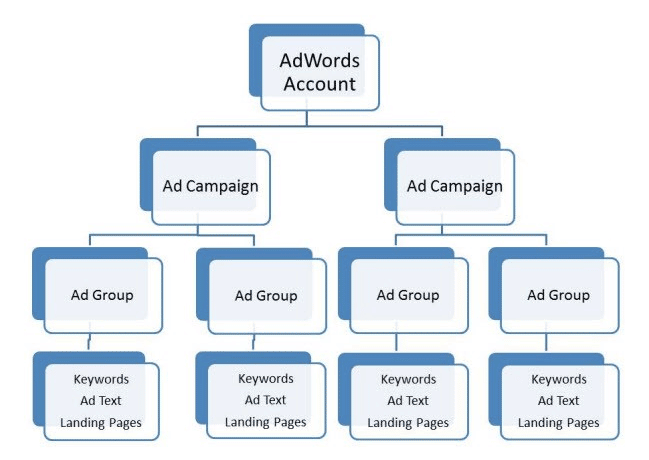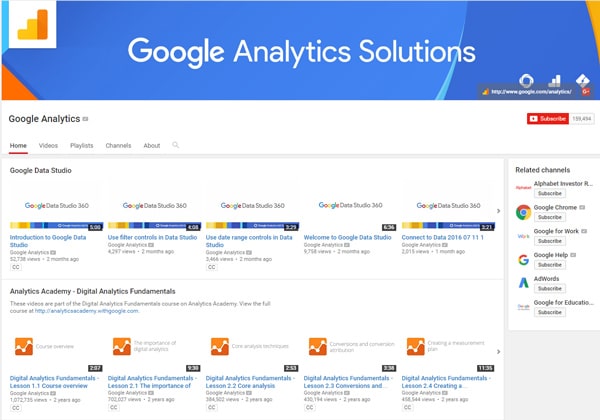Are you one of the many businesses that has avoided investing time and money into an effective PPC advertising campaign due to fear of making Pay-Per-Click marketing mistakes? We understand…we really do, because pay-per-click can seem daunting and confusing.
If you are new to PPC advertising, it is best to brush up on some of the benefits it can provide for your small business in our “PPC Benefits” post. Then take the necessary steps to avoid the five common mistakes identified here.
Pay-Per-Click Marketing Mistake #1 – Launching a Campaign Without a Clear Strategy
How will you know if your pay-per-click campaign succeeds if you haven’t defined what that means? You may be excited and motivated to jump into your first couple AdWords campaigns, but you need to have a clear idea of where you want to go before starting your voyage.
“The cost of being wrong is less than the cost of doing nothing.” Seth Godin
Unless you develop a clear strategy and avoid common PPC advertising mistakes you will likely not find success with PPC. A basic strategy will ask the following questions:
- What is the primary goal? Does your business need to grow its email marketing list or drive traffic to the website? Are you measuring your success in terms of sales figures? You could answer “Yes” to all of these, but a successful PPC marketing campaign will isolate one goal at a time.
- Who is your target market? It is nearly impossible to execute effective PPC advertising campaigns without clarity about who your customer is. Defining and understanding your audience will help you to avoid a number of pay-per-click advertising mistakes. One great way to dig deep into your target market is to create buyer personas.
- What is your action plan? Determine specific tasks to execute the campaign according to your primary goal. The action plan can be higher-level in nature, but be sure to start with one campaign at a time until you get the hang of it.
Each PPC ad campaign should narrow down into specific Ad Groups that have identified audiences, keywords, text or images, and landing pages.
Source: Wordstream
Mistake #2 – Taking a “Do It All” Approach
Although PPC marketing is a neatly packaged term coined to encompass paid advertising across multiple platforms, such as search and social media, there are many components. Dismissing the complexity of the different parts is a common PPC marketing mistake that can cost your business.
Isolate the most important goal and the corresponding target market and start with one or two campaigns.
An effective campaign involves properly segmenting PPC traffic, as each segment can respond differently. Three basic types of PPC traffic are:
- Search Traffic: Searchers may be familiar with your brand, or at least know what they are looking for. They have more intent and are motivated to find a solution.
- Display Traffic: This type of traffic hasn’t heard of your brand or product and aren’t actively looking. They will need more persuasion.
- Social Traffic: Social traffic could be either of the previous two types, but they need a unique experience to be sold. They respond best to links from the social platform to a well-designed landing page.
Delivering different ad experiences to each type of traffic will create more successful PPC campaigns and increase the likelihood of reaching goals. If your business needs a BIG, complex campaign, it is best to leave it to the experts, rather than dive in without the necessary experience or knowledge.
A Related Post That You Will Find Useful:
6 Things Your Small Business Should Know About Pay-Per-Click Advertising
Mistake #3 – Failure to Identify a Realistic Budget
When starting out with your PPC advertising campaign, it is important to carefully monitor costs, because you don’t know what will work and what will not. Pay-per-click can be part art, part science, and frequently part luck.
The first couple of campaigns serve as tests and may not be profitable. Being unrealistic about your budget is one of the critical pay-per-click marketing mistakes that small businesses make.
One suggestion is using this simple equation to determine a starting test budget:
# of keywords x cost per click x 100 clicks.
If your research with the Google keyword planner has yielded 10 keywords that average $1/click, budget a minimum of $1000 for the first test campaign. There will likely be a few high performing keywords and a couple of duds. Monitoring the campaign will allow you to optimize landing pages and eliminate under-performing keywords to create a more economical and effective campaign.
If you have a small budget, limit your keywords, but strive for 100-200 clicks on each keyword to determine whether it’s a high quality, converting keyword.
Once your campaign is profitable, eliminate the initial budget and focus on return on investment. It may not be necessary to set a budget cap if you begin to see returns on $1 that equal $2 or $3. At this point, your priorities should shift from monitoring cost per click to paying attention to earnings per click.
Mistake #4 – Having Unrealistic Expectations
Assuming that your website is optimized for SEO, you may expect that PPC ad campaigns will receive results immediately. That assumption is one of the classic pay-per-click marketing mistakes for a few reasons:
1. Search engines tend to be cautious about new campaigns. They have not yet graded the effectiveness of your campaign or their ability to make money from it, so your ad may not rank high yet.
2. Until a click-through-rate metric has been established, other, less important metrics are used for ranking.
3. You have not yet established a track record with search engines or other platforms and priority will be given to accounts that have already proven themselves.
The first four weeks of a new PPC marketing campaign may feel discouraging, but think of it as a learning process and continue to evaluate what is working well. Small businesses achieve PPC windfalls when they consider it as a long term investment and not a quick fix to low traffic.
A Related Post That You Will Find Useful:
Facebook Ads – 7 Ways They Can Boost Your Small Business Growth and Sales
Mistake #5 – Not Testing Your Conversion Funnel
Although you may be excited and ready to launch your PPC marketing campaign, adding one final step may be the difference between success or failure. Making sure that everything is working the way it should be is the final step. Use test users to perform the following:
- Analyze the website from a hands-on, experimental perspective.
- Use the site to perform tasks.
- Test the site from a variety of devices.
As the small business owner, visit the Google Analytics You Tube Channel to gain an in depth understanding of analytics tools so that you will know if they are working correctly.
Test your landing pages and all other buttons and functions to make sure that everything is performing well. Make sure that the sales funnel is seamless before the PPC campaign is officially launched.
Conclusion:
Pay-Per-Click marketing can provide significant benefits for small businesses when done effectively, but there are potential pitfalls. Avoiding the common mistakes identified here can make a large difference in your level of PPC success and in your budget expenditures.
Now that you have an understanding of the most common Pay-per-click marketing mistakes made by small businesses, you can either develop your first campaign or clean up your existing campaign.
As always, the team at Web Presence Solutions is available to help your small business create an effective pay-per-click advertising campaign. Paid advertising can help put your small business on the map. Help prepare your business for growth with a Web Presence Assessment today.
HANDPICKED RELATED CONTENT
6 Things Your Small Business Should Know About Pay-Per-Click Advertising
Facebook Ads – 7 Ways They Can Boost Your Business Growth and Sales



